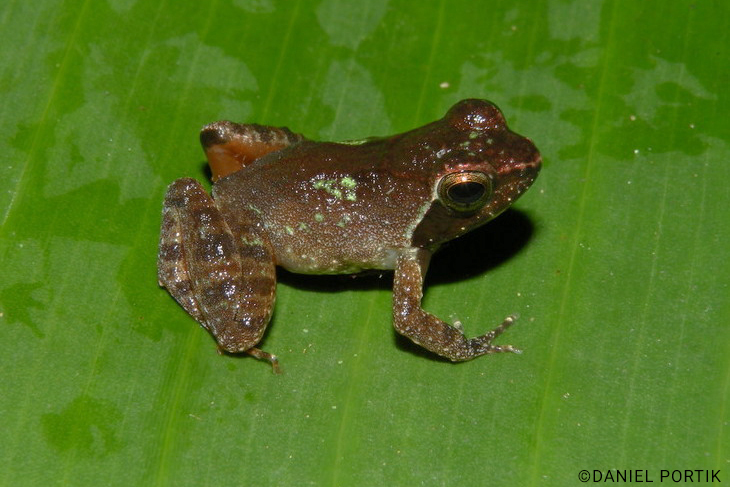About
The Critically Endangered puddle frog Phrynobatrachus intermedius is a highly cryptic species endemic to Ghana, and is known from very few specimens.
This species of puddle frog is very poorly known and has only been recorded at two sites in Ankasa Conservation Area, Ghana, that are 2 km apart. Therefore, it is likely the species is highly localised.
Puddle frogs of the genus Phrynobatrachus diverged from all other living amphibians around 90 million years ago. This means they are as closely related to other frogs as we are to rabbits, hares, rats and squirrels!
There is continuing decline in the quality and the extent of its habitat at known sites mainly due to forest degradation as a result of logging and agricultural development. The species occurs within the Ankasa Conservation Area. These areas are well managed despite localized encroachment by surrounding communities.
- Order: Anura
- Family: Phrynobatrachidae
- Population: Unknown
- Trend: unknown
- Size: <28mm
EDGE Score
Distribution
The species is only known from two sites in the Ankasa Reserve in southwestern Ghana, found around 300 metres above sea level.
Habitat and Ecology
The species’ habitat is swampy areas within primary rainforests. It is presumed to breed in water with tadpoles emerging from the eggs as part of larval development.
